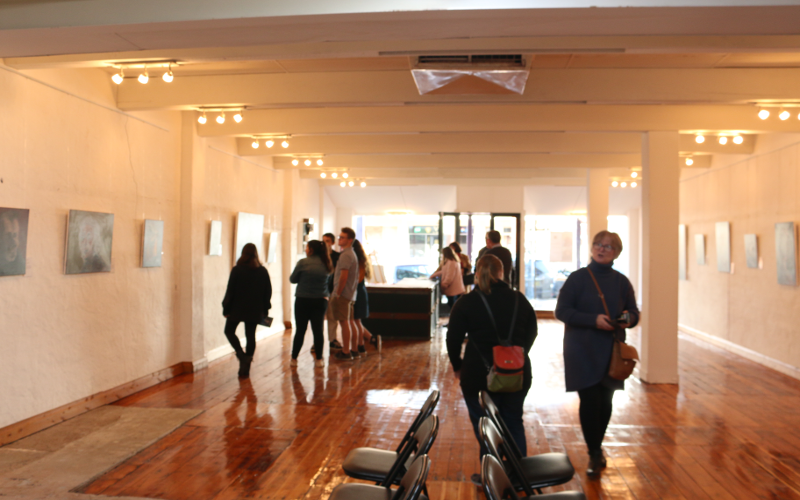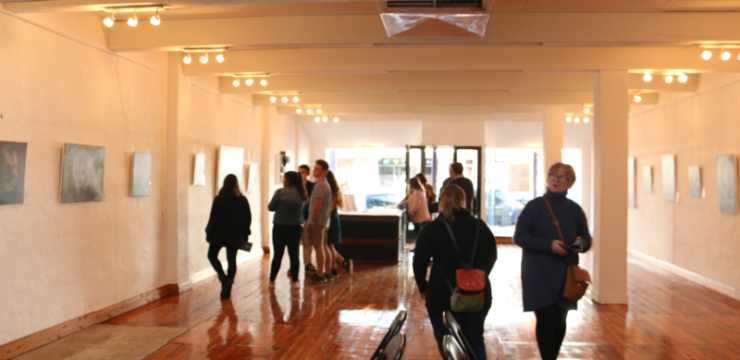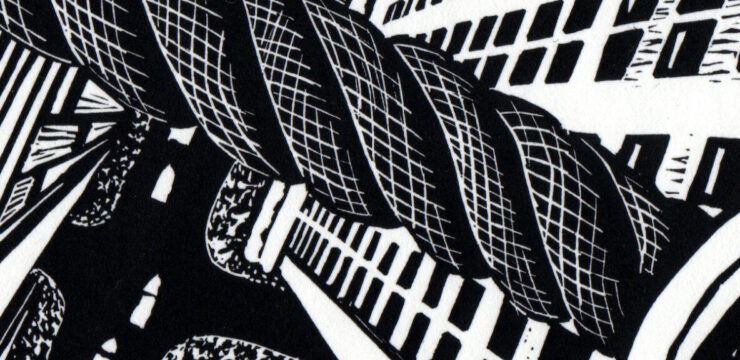The Story of SPACE
 Credit: Edgar Alvarez
Credit: Edgar AlvarezAs told by Allison Reynolds.
Sometimes things just come together, and sometimes they don’t. Like the subject for this piece is “Creating Space” which is a perfect vehicle to talk about how our 100% disabled-artists ARI got together and opened SPACE our social enterprise gallery in country NSW.
The idea was simple. Our town is suffering from financial decline, businesses are closing, shops are empty, there’s no dedicated art gallery or creative space for hundreds of kilometres. Should be a doddle, find somewhere and set up!
Oh we were sweet summer children. Even though members have experience in opening businesses, working for ourselves, we forgot that we are disabled, and people know we are disabled, and that means that all sorts of other things come into play.
Being masters of bootstrapping (starting a business with little to no money) we decided to hit up the local council first. We pitched our idea “Creative space and gallery, main street, people see work in progress, attract tourists, raise town morale, attract new artists, good for town and good for artists”, it seemed the council heard “Pushy disabled people want prime council space in main street AND they want it accessible AND they want it for free, or close to”. Look, the council didn’t have anything that met our needs and they weren’t prepared to purchase any of the historic buildings that are mouldering away in the main drag and we get that, and offering an abandoned shed without facilities 1km out of town was not the innovative solution we had hoped for.
OK, so we went to plan B. We started putting out feelers for retail spaces in the main street. We started with the ones that were accessible or could easily be made accessible without much cost.
Small detour into how commercial real estate works. Generally, a retail property’s value is in how much rent it earns. An investment retail property owner would rather not rent to anyone than to drop the rent to get a tenant. They can point at the rent they were getting years ago and say “See, she’s a ripper earner and worth every cent of the exorbitant price I am asking.” For those of us that live in a world where every dollar counts, (and we bumped into this a few times hence historic buildings mouldering away in the main drag) bemusement became our middle name.
Then we got a bite from a shop owner whose premises had been closed for three years. Previously it had been a café in the old “Greek Style” and it still had gorgeous Art Nouveau leadlight glass entrance and original mirrored Edwardian wall fittings. It was large inside and had rooms that could be studio space out the back. We met with the owner and negotiated a deal (down from the high rent they wanted).
For legal reasons we will now have a dot point highly edited montage of what happened next:
- Sign a contract with owner
- Pay 12 months rent up front (our leverage for a cheaper rent)
- Start to move and make changes that we had told the owner we would be doing (like take down previous business’ signs and branding)
- Owner contacts and starts demanding things like leaving previous businesses signs and branding – telling us she was doing us disabled people a favour etc etc
- We object
- They object
- They get lawyers involved
- We get lawyer friend involved
- They say we can break lease
- We say great and 10 days after moving in we move out
Oh, you think that’s the end? Nahhh
- We ask for our money back minus the 10 days
- They send money back minus a big chunk for all sorts of things
- We say give our money back
- They say no
- We say see you in court
- They say pfft
- We initiate Administrative Tribunal proceedings
- First step is to offer mediation
- They say go jump
- Administrative Tribunal says OK see you in court
- We go to court
- They get told to give most of the money back
- They are unhappy that the disabled people turned out to be “bad news”
After that we felt pretty scorched so when another premises became available two doors down from the café just before Christmas we made sure we had long meaningful discussions with the owner. The previous business was breaking their lease and the owner said for us to work with the current tenant to move in when they moved out.
Another dot point montage:
- We contact current tenant and tell them to keep us in the loop with what they are doing
- They contact is to see if we wanted to buy their stuff
- We didn’t want their stuff
- Christmas came
- New Year happened
- We tried to contact previous tenant but no answer
- Silence
- We contact owner who is surprised to hear from us
- Previous tenant has told owner that we weren’t interested any more and wanted a relative to move in
- We asked did he think to contact us
- Owner rents to a new tenant (not a relative)
Look, resilience is how quickly you get back up after being knocked down. We are GREAT at it, but in this case we were really, really, wondering whether this was a good idea. In a tiny town there’s not many suitable places and everyone by now knows that disabled people are “bad news”.
We had looked at a space that was just off the main street, but still on a main traffic thoroughfare. The place was a dress shop that had not been renovated since the seventies. It had thick gold shag pile carpet and walls that had literally decades of tar from cigarettes. It was dark, and dingy, had no hot water, and had been built over 100 years ago.
There was one difference though – the owner had another not-for-profit in running a second-hand bookshop so that the place was being used and the owner wasn’t in it for investment purposes. The owner inherited the building and has strong emotional ties to the space as it was a close relative’s The owner had not entered the shop themself since the relative’s death in the 80’s. Now the owner was thinking of moving everything out and renovating it for sale (well get someone else to renovate it as the owner still couldn’t enter it).
Along we come and take one last roll of the dice. This place would not be easy to renovate. It would cost us pennies we would rather spend elsewhere. It would cost us energy we couldn’t really spare. We reconciled ourselves to the fact we would be doing good for the “community” by bringing this piece of history to life so we decided for one…last…go.
We sent in an intermediary this time. Negotiated a deal, paid a year’s rent. And then started 2 months of incredibly hard, filthy work. We snagged some visiting Duke of Edinburgh kids and risked their long-term lung function by having them help rip out thousands of carpet staples from a floor that exuded 140 years of dust from the cracks. We swapped a website for a man to sand and varnish the floors. We washed that nicotine right off those cement rendered walls and painted them in the cheapest white paint Bunnings had in stock.
SPACE was born and 12 months later has been home to exhibitions, workshops, karaoke, a film festival, disabled artists selling their first works, local artists finding a new sales outlet and much, much more. Covid closed the doors for a while, but we have rented out one of the back rooms to an Indigenous Lands Council for 3 days a week and now have someone who opens up and loves yacking to people coming in. Sales have started again and while some of the disabled artists are still in isolation, a good few are there at normal time on a Friday making things happen in our SPACE.
Author: Allison Reynolds
Disabled Visual Artist and sometimes writer from country NSW.
Founder of Creatives Collective ARI and volunteer director of SPACE.
Latest Success Stories

The Story of SPACE
Author: Allison Reynolds Disabled Visual Artist and sometimes writer from country NSW. Founder of Creatives Collective ARI and volunteer director of SPACE.

Our Featured Artworks for 2020
Congratulations to Larissa MacFarlane, Jamahl Pollard, Elizabeth West, Matthew Clarke, Carmel Taylor, Andi Snelling, Incite Arts and Prue Stevenson, whose submitted artworks were chosen by Arts Access Australia to appear as the feature artworks on ...




